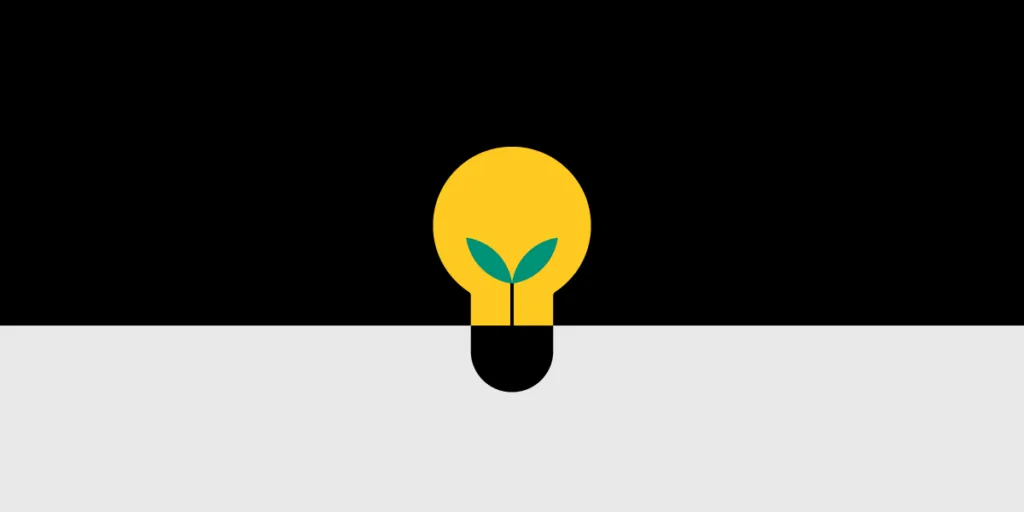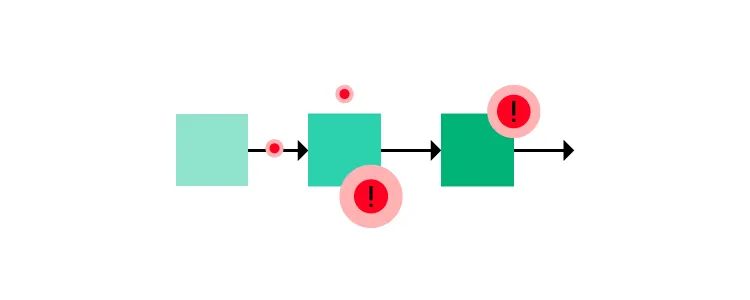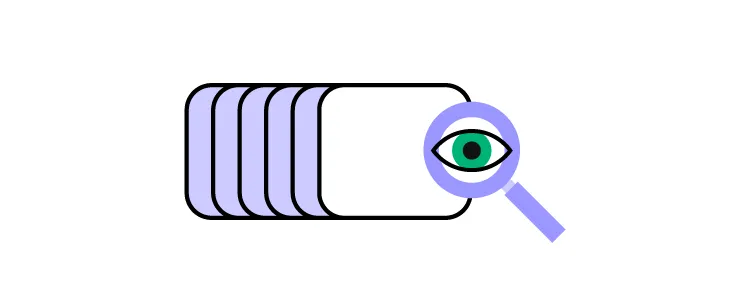Ideation in Design Thinking: Importance of Approach

One of the most important jobs of a designer is to come up with new and innovative solutions to user problems. How can designers keep generating innovative ideas? The answer is in the design thinking ideation process. It allows designers to come up with fresh ideas by thinking outside the box, challenging assumptions, and exploring new territories. This article explains what ideation is, why it is important, the process for ideation, and how to create the right environment.
Table of contents
What is ideation?
Ideation is the second stage of the design thinking process where participants in a design thinking workshop come up with ideas on how to solve a specific user problem. The design thinking process is made up of three phases: empathize, ideate, and prototype.
The ideation phase of design thinking is guided by the user problems that were defined during the empathize phase. Ideation is about the exploration and identification of potential solutions. Not all ideas will be viable solutions, and that’s okay. The primary goal of ideation is to spark creativity and innovation.
Why is ideation important in design thinking?
Sometimes designers ask “what is the purpose of ideation?” The answer is that it marks the transition between understanding the problems that users have and generating solutions for these problems.

Ideation gives designers the license to let their minds run wild, question the status quo, and look at problems from different angles. It also helps designers to collaborate and create groundbreaking solutions as a team.
How to run the ideation phase of design thinking: a step-by-step guide
Here are the steps that you need to follow for a productive ideation process.
Step 1: Define the problem
The problem or problems that were identified during the empathize phase of your design thinking process will guide your ideation session. Your team will generate ideas that will solve these problems.
Phrase the problem using a ‘How might we’ prefix. For instance, if your team is solving the problem of poor user experience in an app, the question would be ‘How might we create an intuitive user experience?’ This phrasing focuses the ideation session while implying that there is a solution to the problem.
Step 2: Choose a space
The location of your ideation session has a huge effect on how safe and comfortable the participants will feel. Choose a large room that has whiteboards or enough wall space for you to set up your own writing materials.
It is a good idea to choose a space that is away from the environment where your team usually works in. Being in a new environment triggers creativity and alternative ways of thinking. It’s also important to come up with a few icebreaker activities to help the participants loosen up.
Step 3: Set time limits
Decide beforehand how long the ideation session for each problem is going to last. Set the number of ideas that the session should generate for each problem. These limits will give the session momentum, create energy, and an adrenaline rush which will spark even more creativity.
Step 4: Select ideation techniques
There are several ideation techniques that you can use to help your team come up with ideas. The most common ones include:
- Brainstorming– verbally sharing ideas within the group.
- Mind mapping– visually ideating by starting with a keyword that is related to the problem and then writing all the ideas associated with it around it.
- Storyboarding– creating visual storylines of how users might go about solving the problem.
- Worst possible idea– coming up with the worst possible ideas to remove creative blocks.

Don’t limit your ideation session to one technique, you are free to use more than one technique. This will ensure that your team generates the highest number of ideas.
Step 5: Rank the ideas
If your ideation session has gone according to plan, you will end up with lots of ideas. Some will be promising, others will be outrageous and others will be crazy. Together with the participants sort the ideas according to different categories such as promising, interesting, unconventional, or crazy. For each category, rank the ideas. Don’t throw away any ideas as they might be useful in the future or in other design projects.
Step 6: Choose the ideas that will move to the prototyping stage
The end goal of the ideation in design thinking is to come up with ideas that can be prototyped and tested. Choose the ideas that are going to be prototyped and maintain a record of those that didn’t make the final cut.
How to get your team into the right mindset for ideation
The success or failure of your design thinking ideation process will depend on how you approach it and the atmosphere that you create. You need to create a safe judgment-free environment that will give all the participants the chance to express their ideas including the most outrageous or unconventional. Here’s how to create the right atmosphere:
Accept all ideas
To encourage creativity and open mindedness, do not reject any ideas. If you do, you will dampen the mood of the session. Remember that the aim is to generate as many ideas as possible. On top of accepting all ideas, encourage participants to build on the ideas of others by using the ‘yes and…’ phrase. This will lead to interesting ideas and perspectives.
Stay on topic
During a high energy ideation session, your team can easily get derailed and start ideating on other issues that are not related to the problem. As the facilitator, it is your job to guide the session and refocus the ideation session. Should your team come up with a juicy idea that is not related to the problem, note it down for future reference and then guide the session back to the problem at hand.
Document all ideas
Ensure that you log all the ideas produced during the session. The facilitator can act as a secretary by writing the ideas down on a whiteboard. Alternatively, the participants can also document their ideas by writing them on sticky notes or on the whiteboard.

When documenting ideas, summarize them, and record the key point. For instance, if a participant suggests “we could create an interactive story-based app to improve user experience” document “create an interactive story-based app.” To ensure that you don’t miss any ideas, work on ideas one at a time.
Turn your ideas into prototypes with the best design tools
The ideation phase of design thinking helps your design team to come up with innovative solutions to design problems. Use UXPin to create prototypes of the ideas you come up with during ideation sessions. Transform your ideas into lifelike prototypes when you sign up for a free trial of UXPin today.

